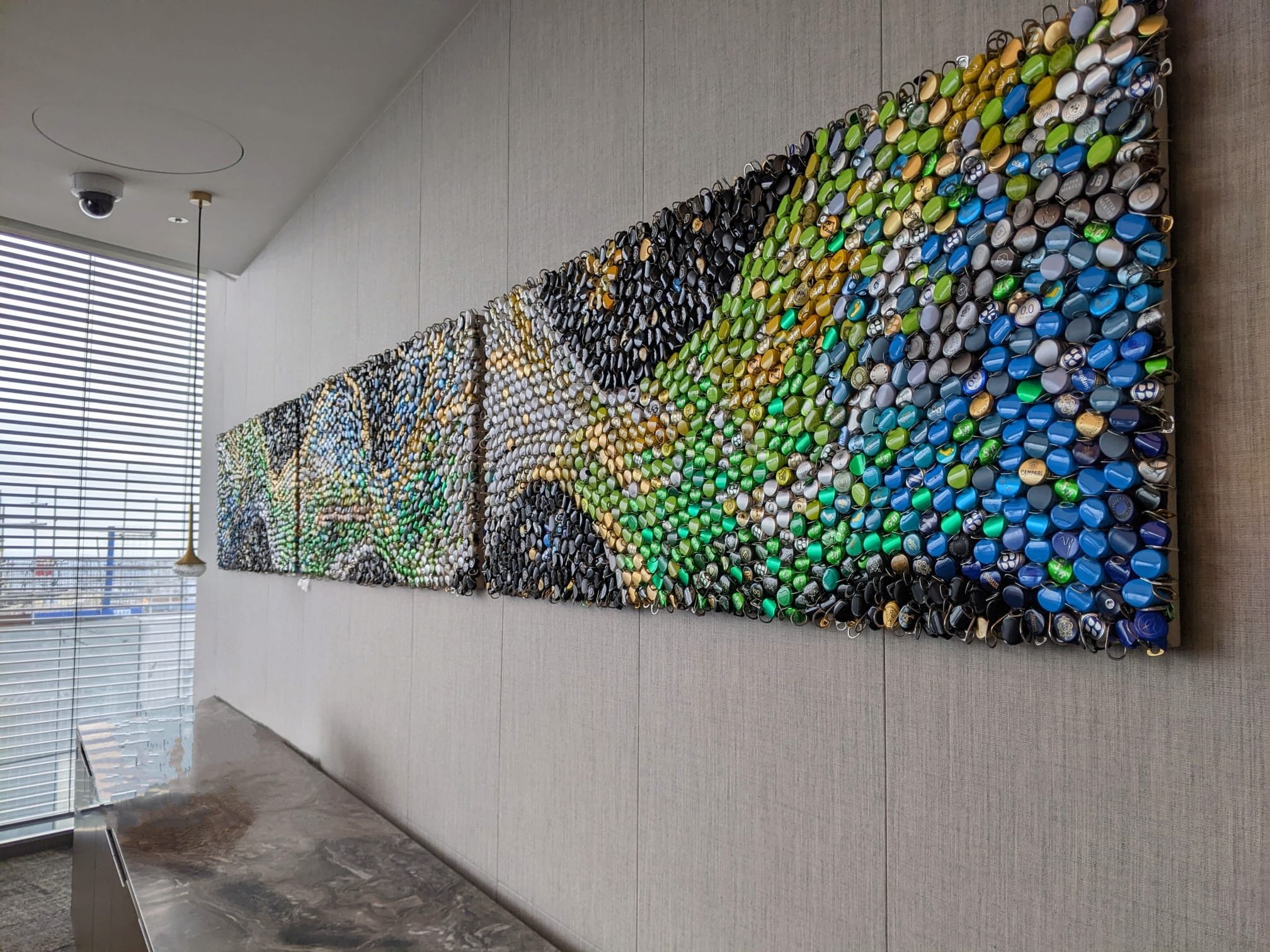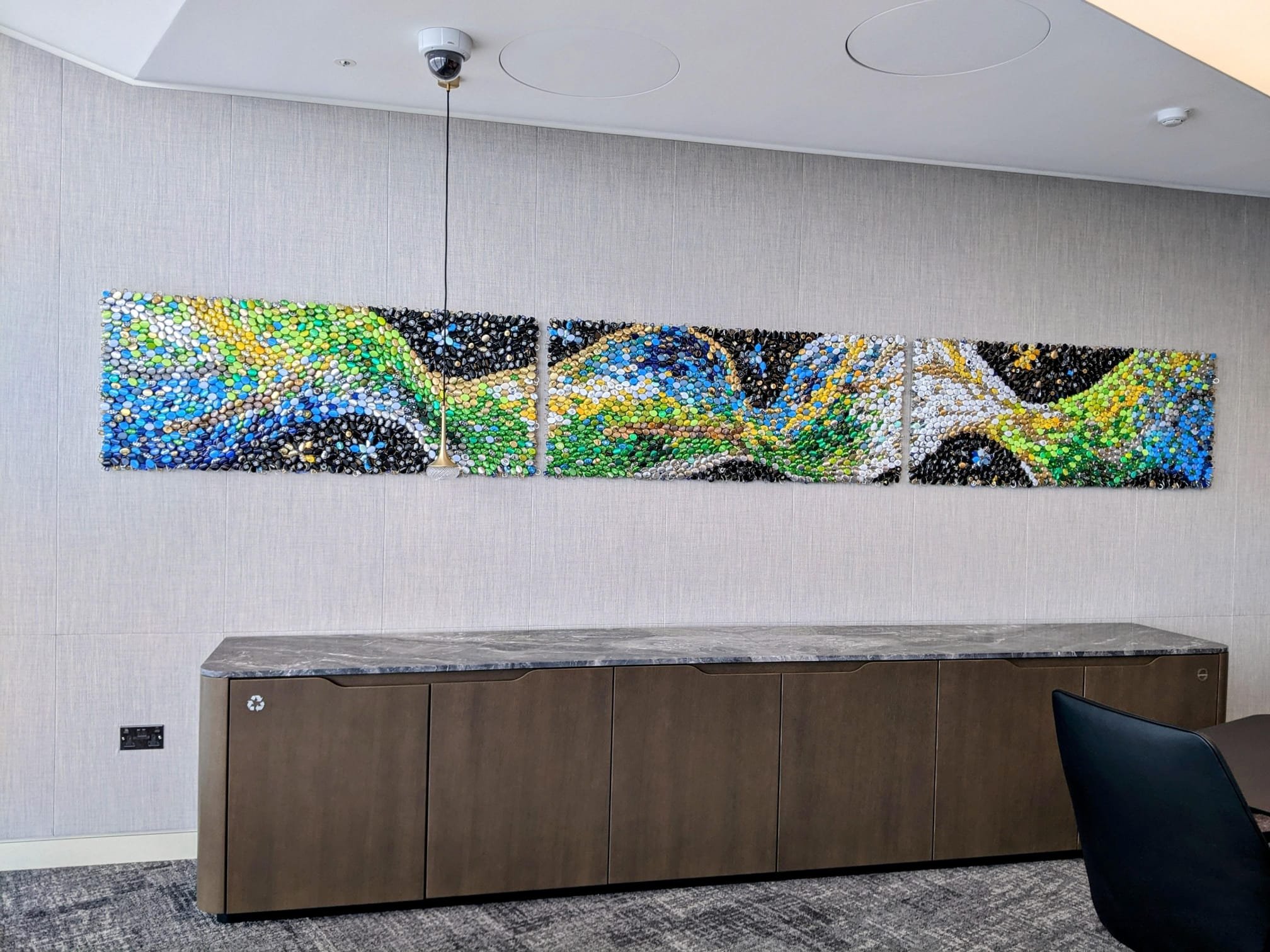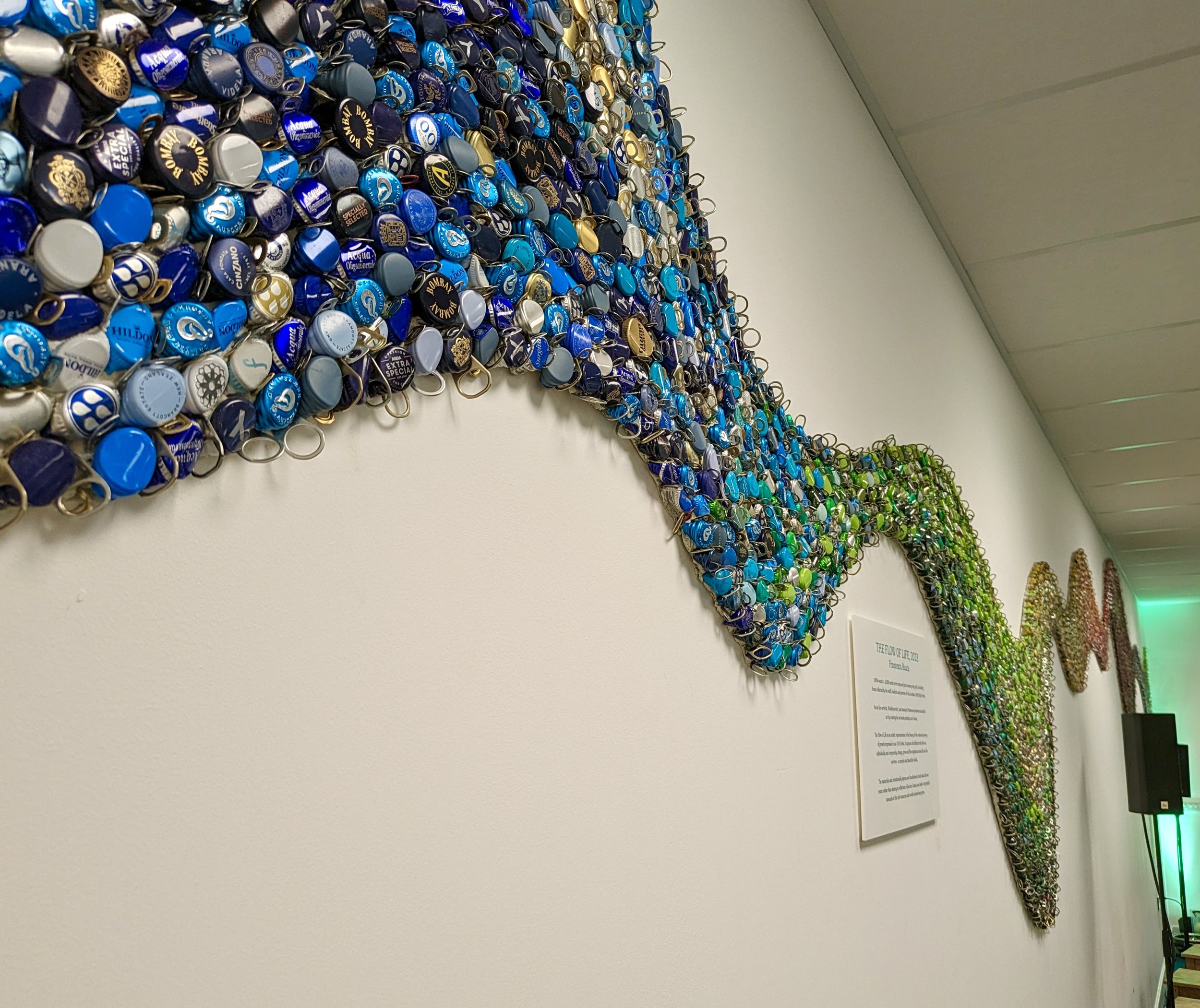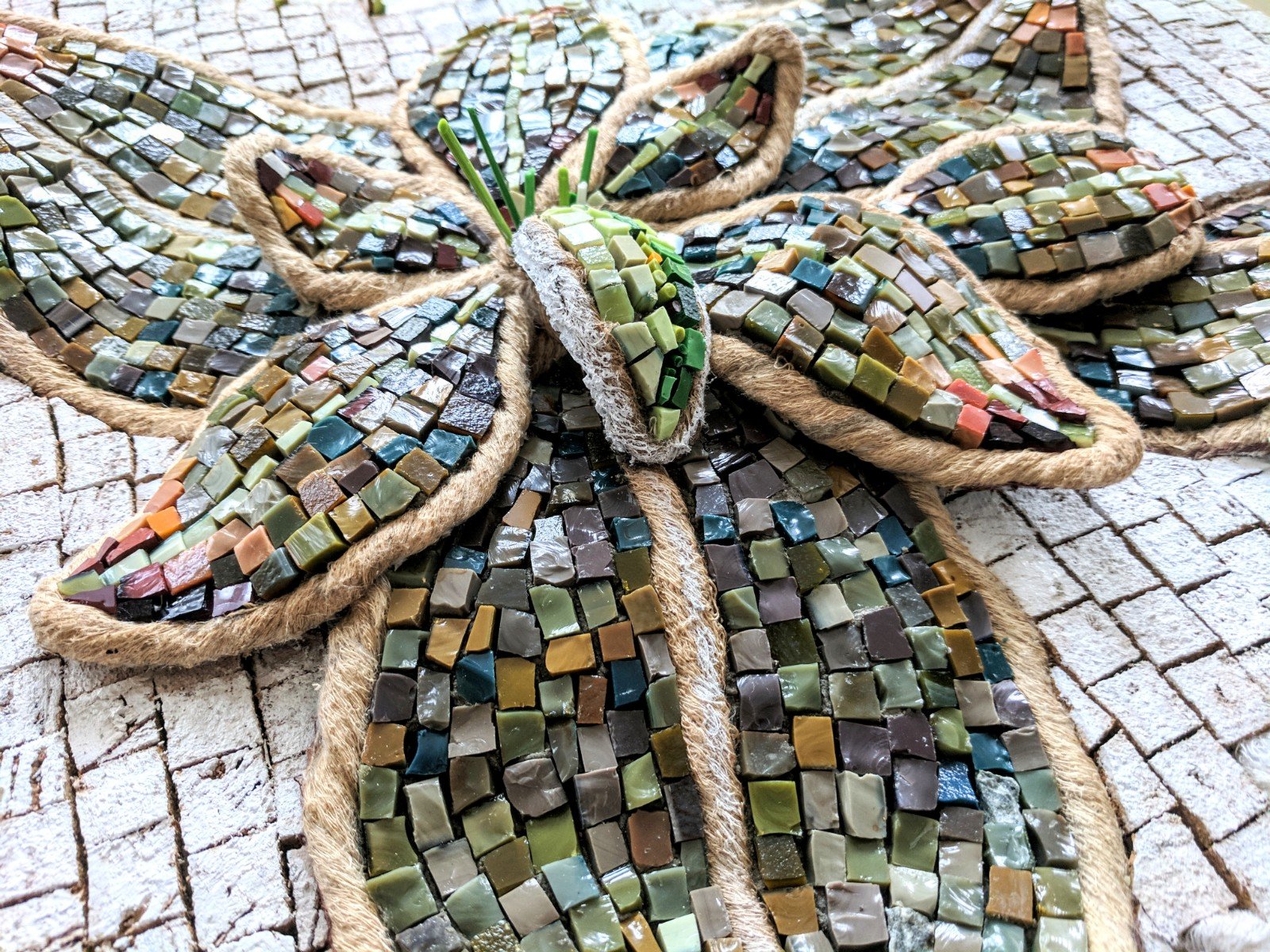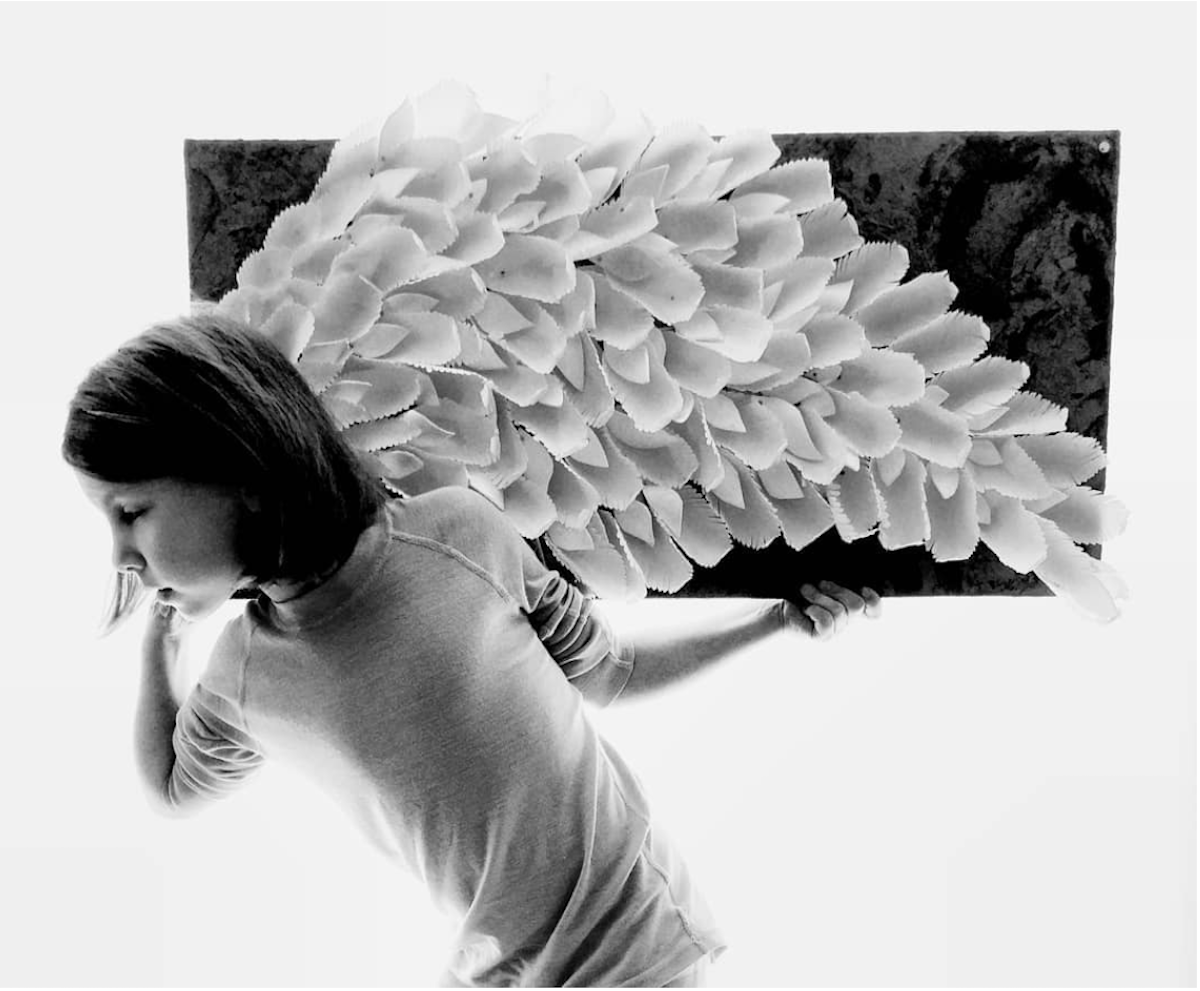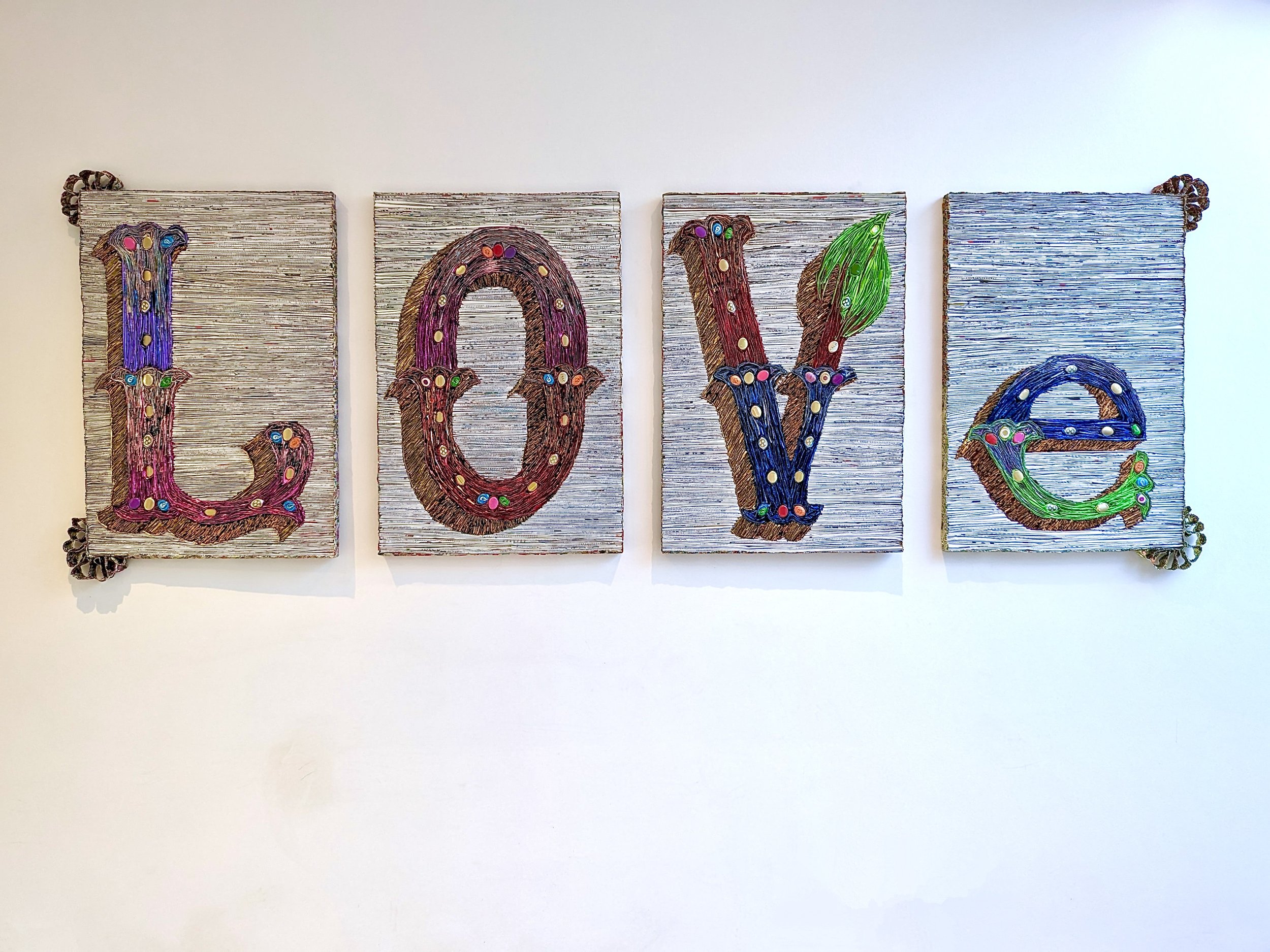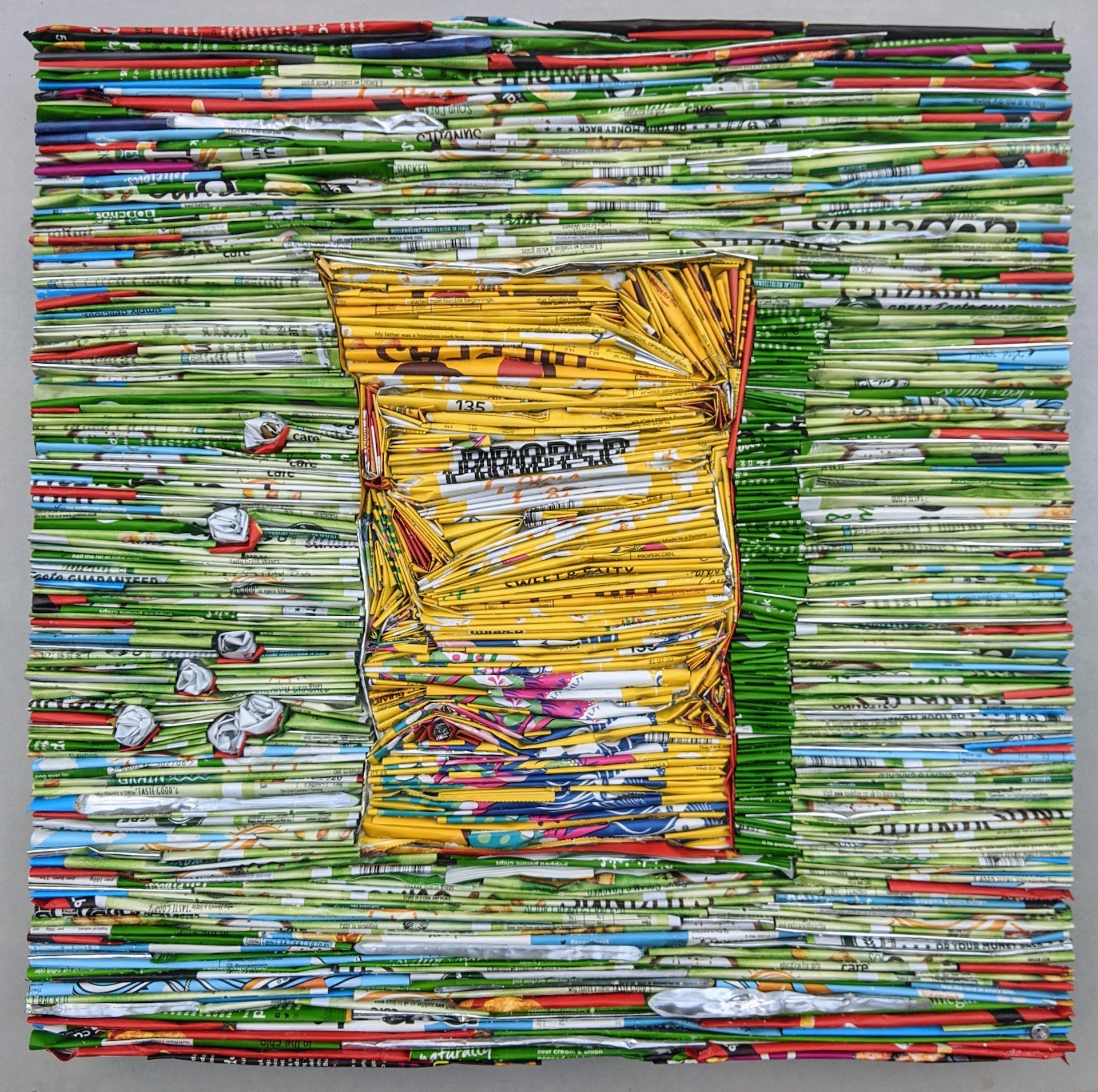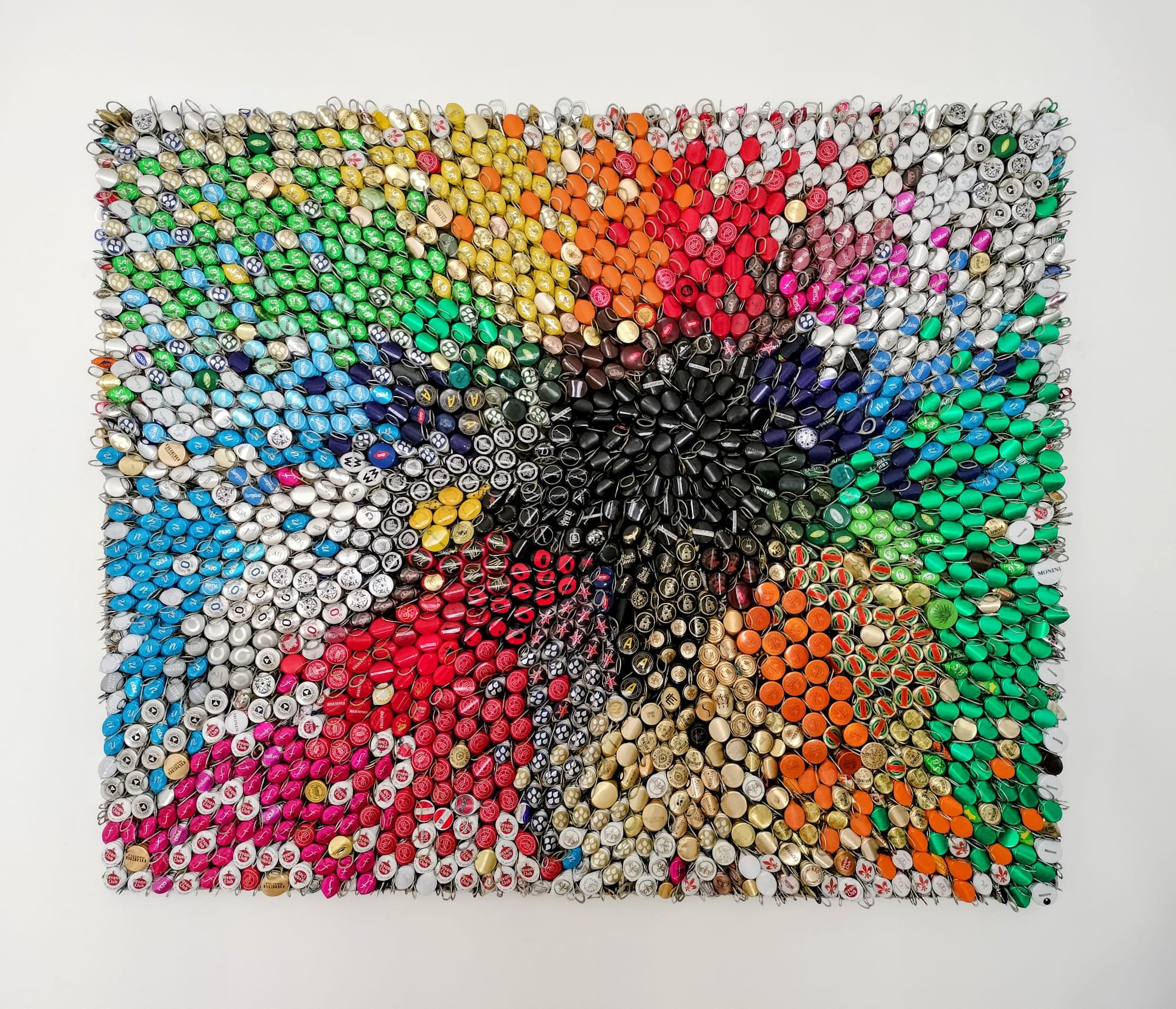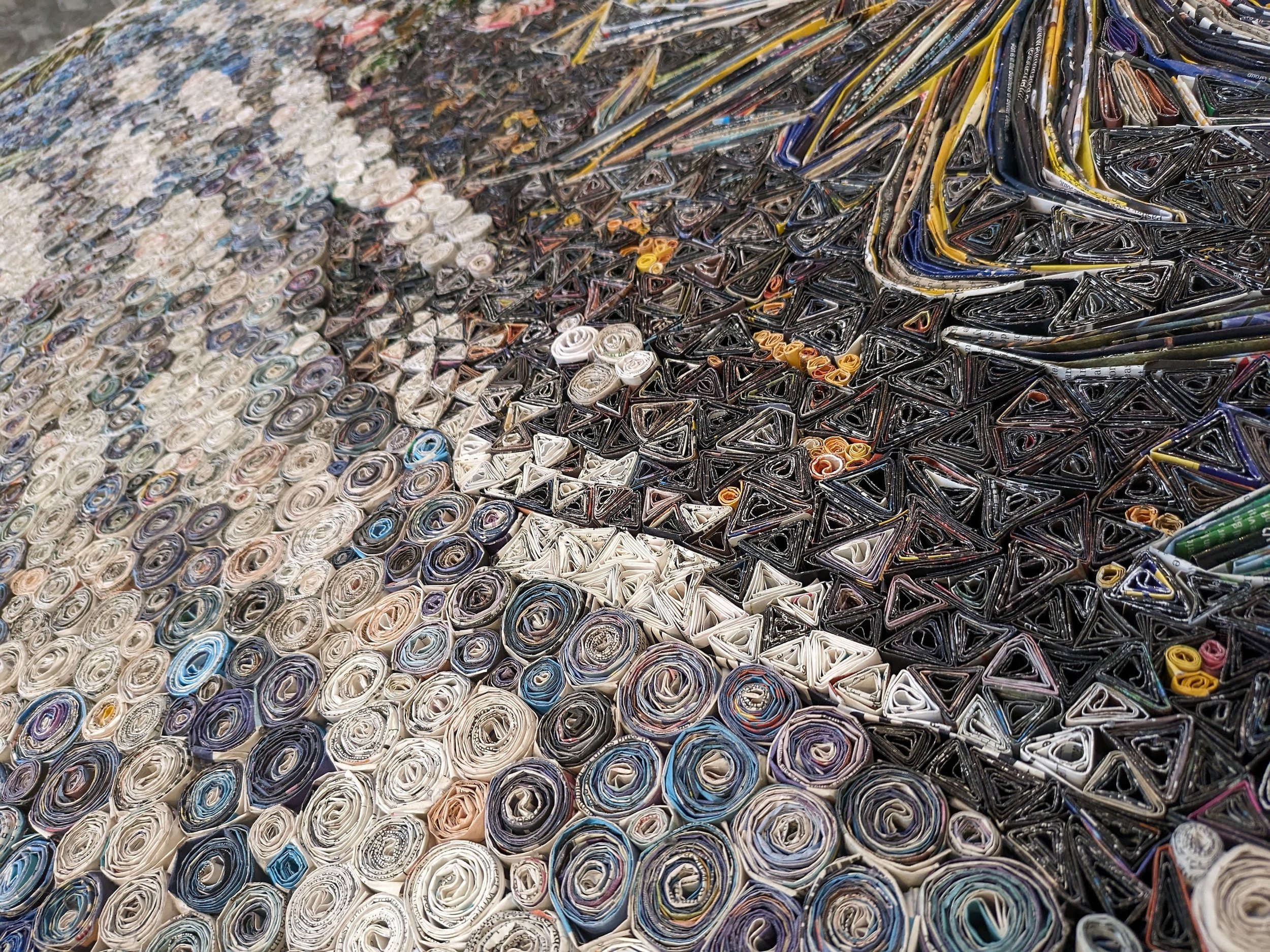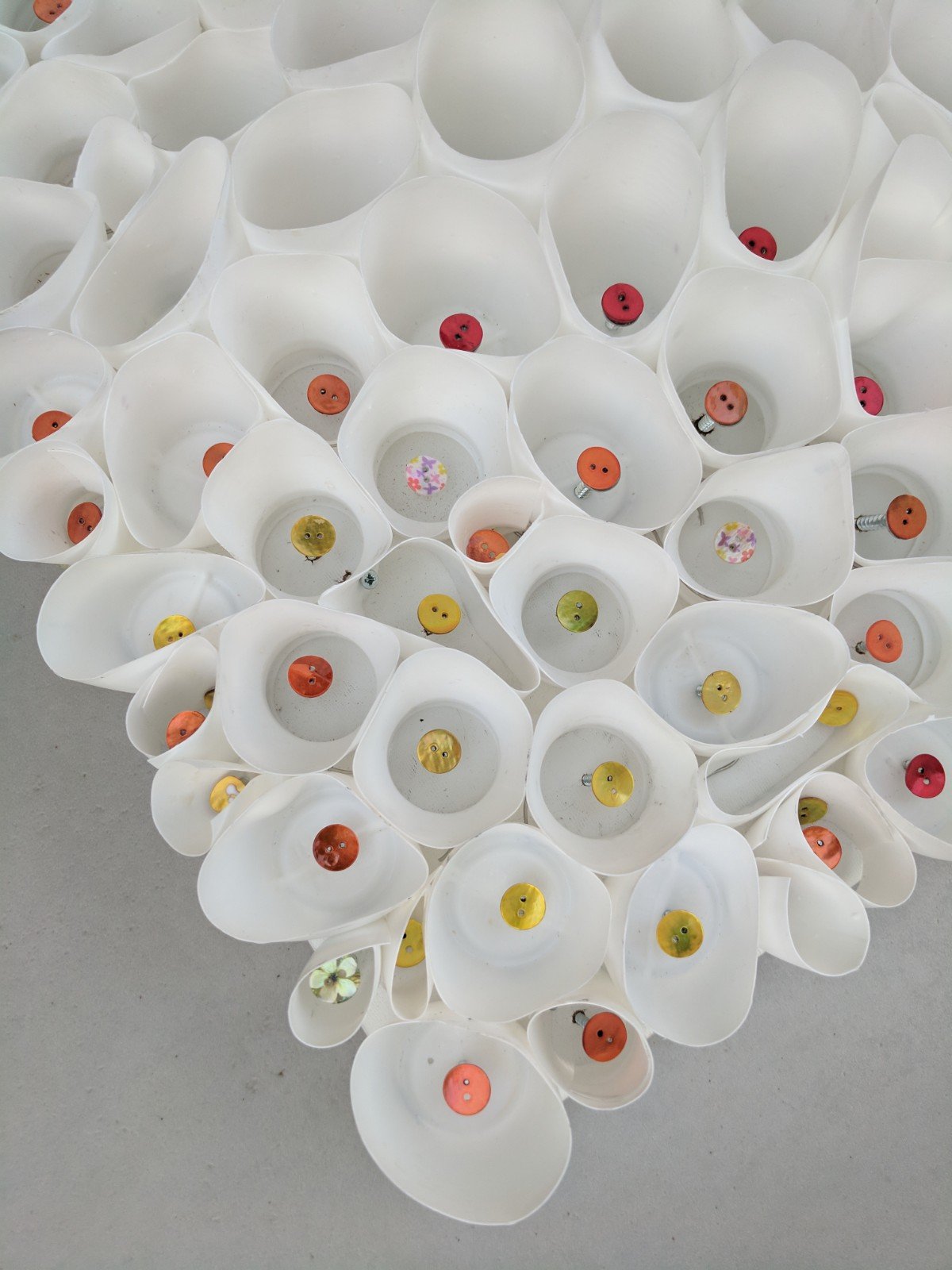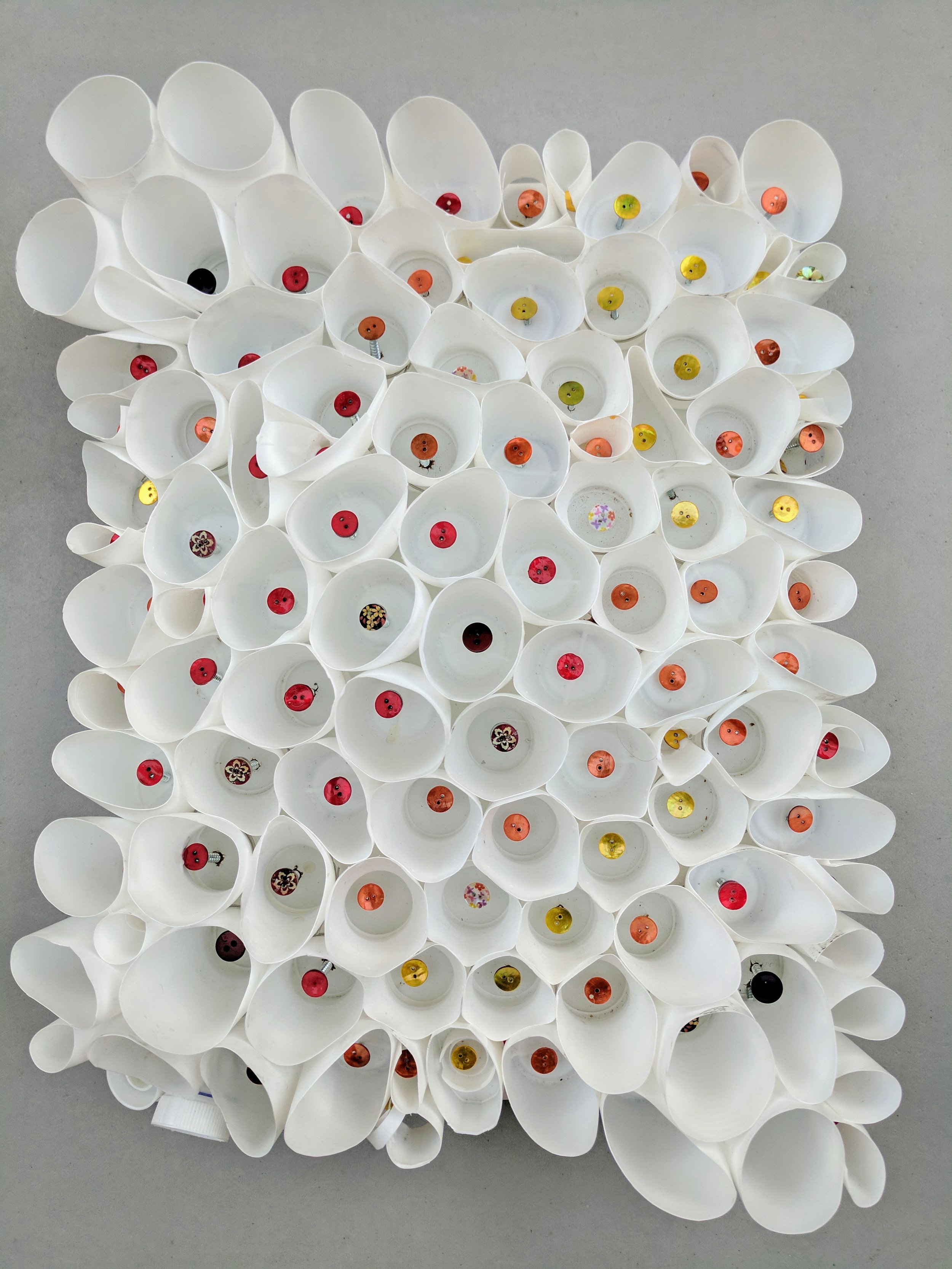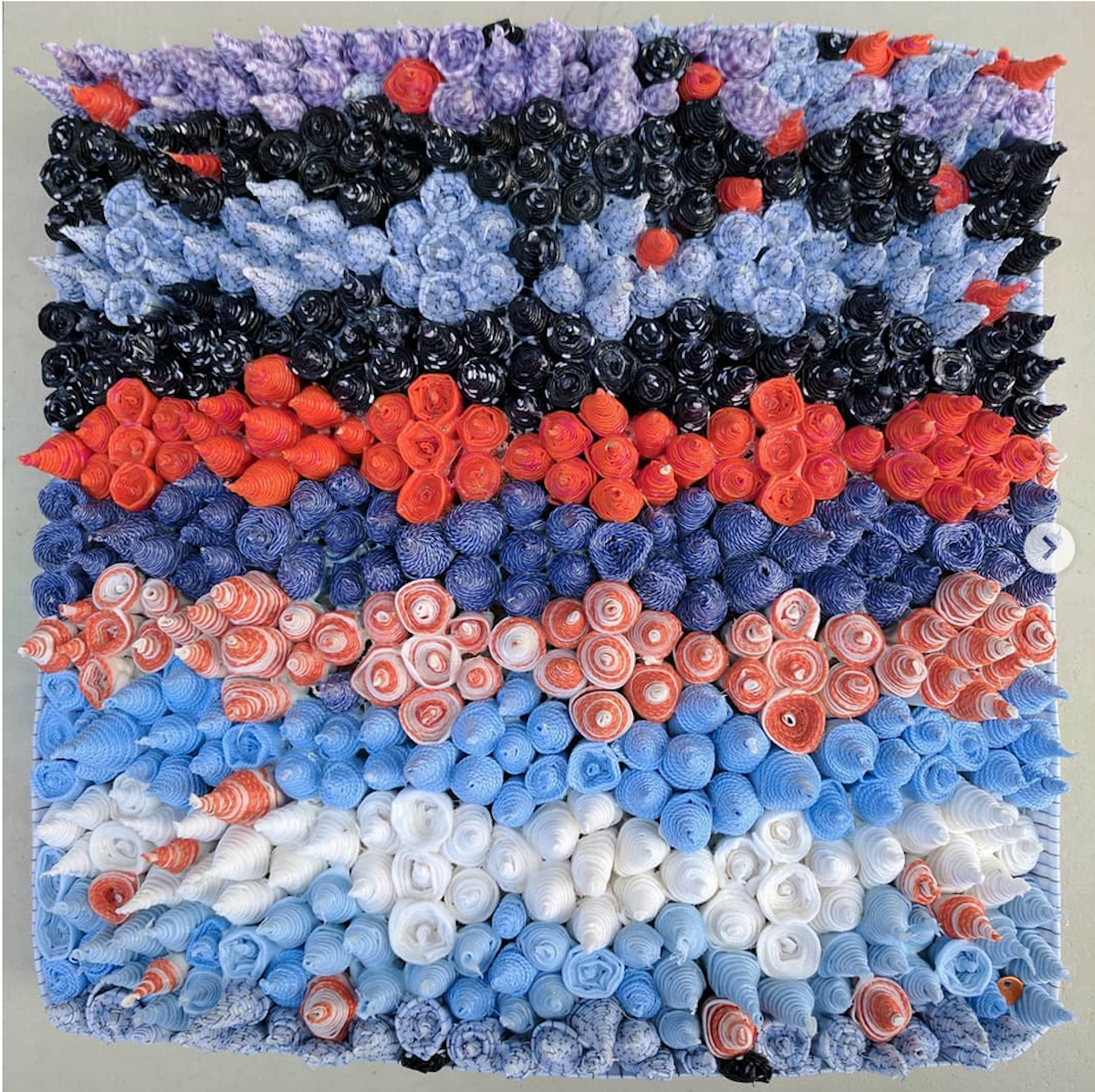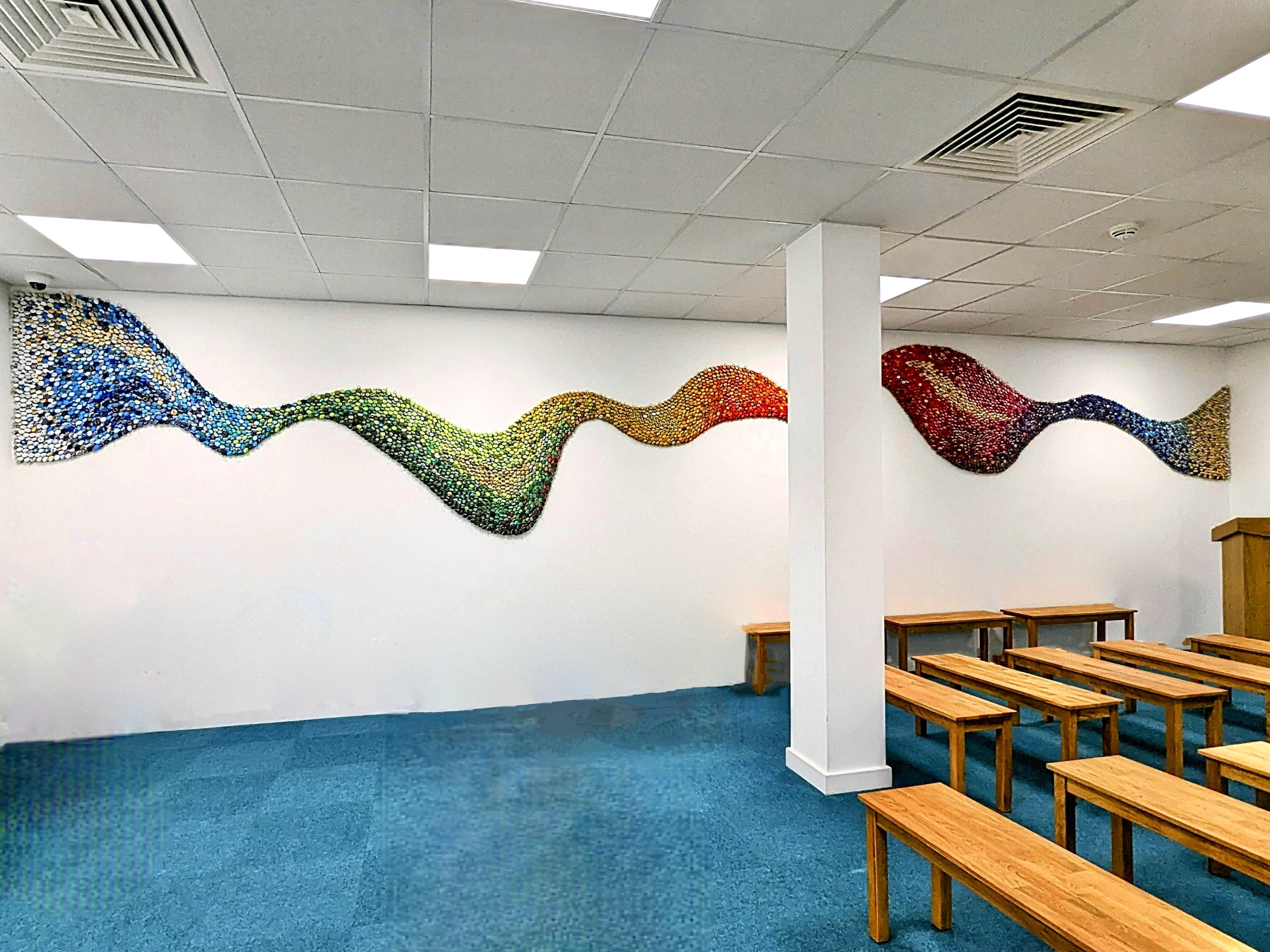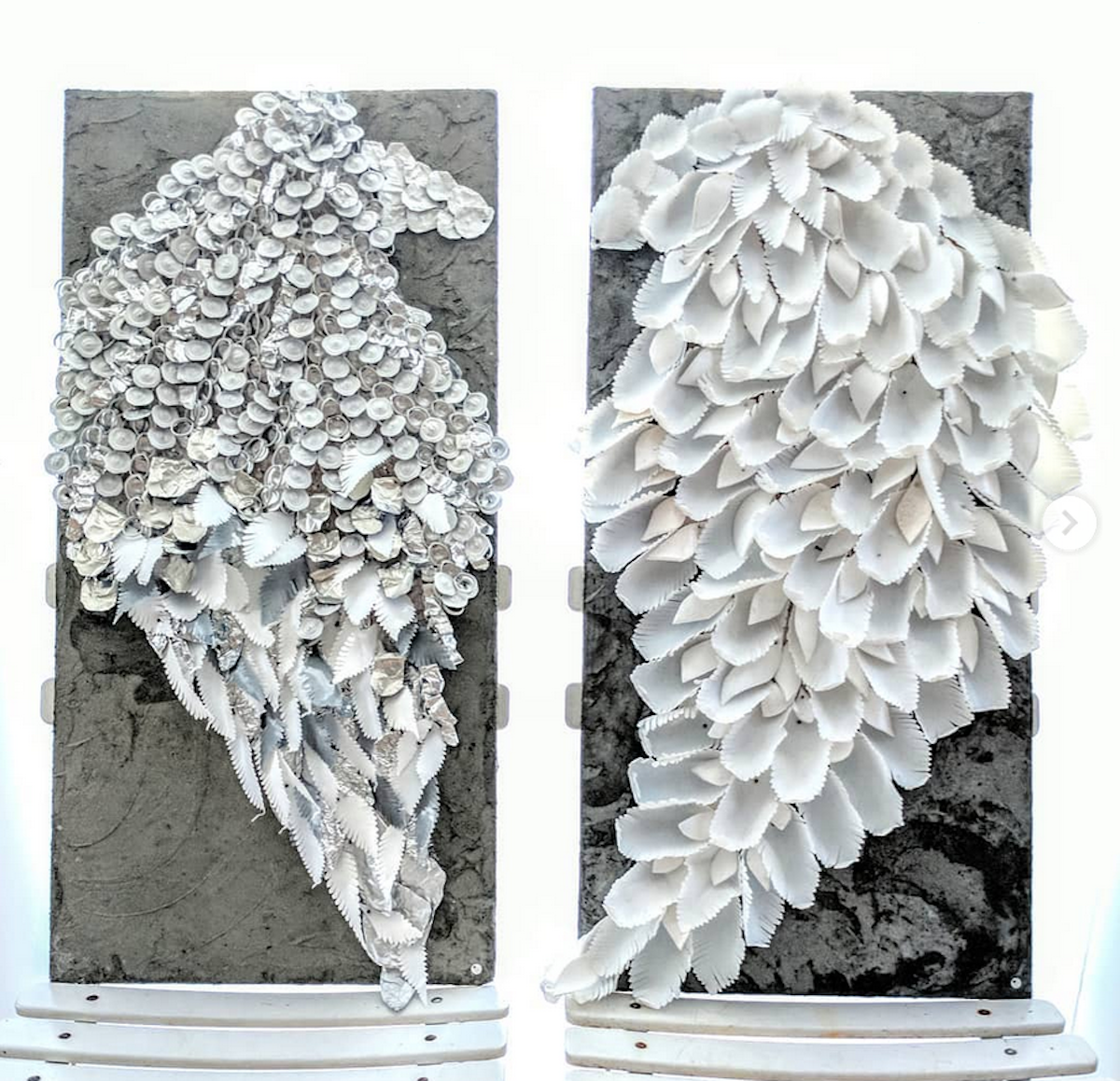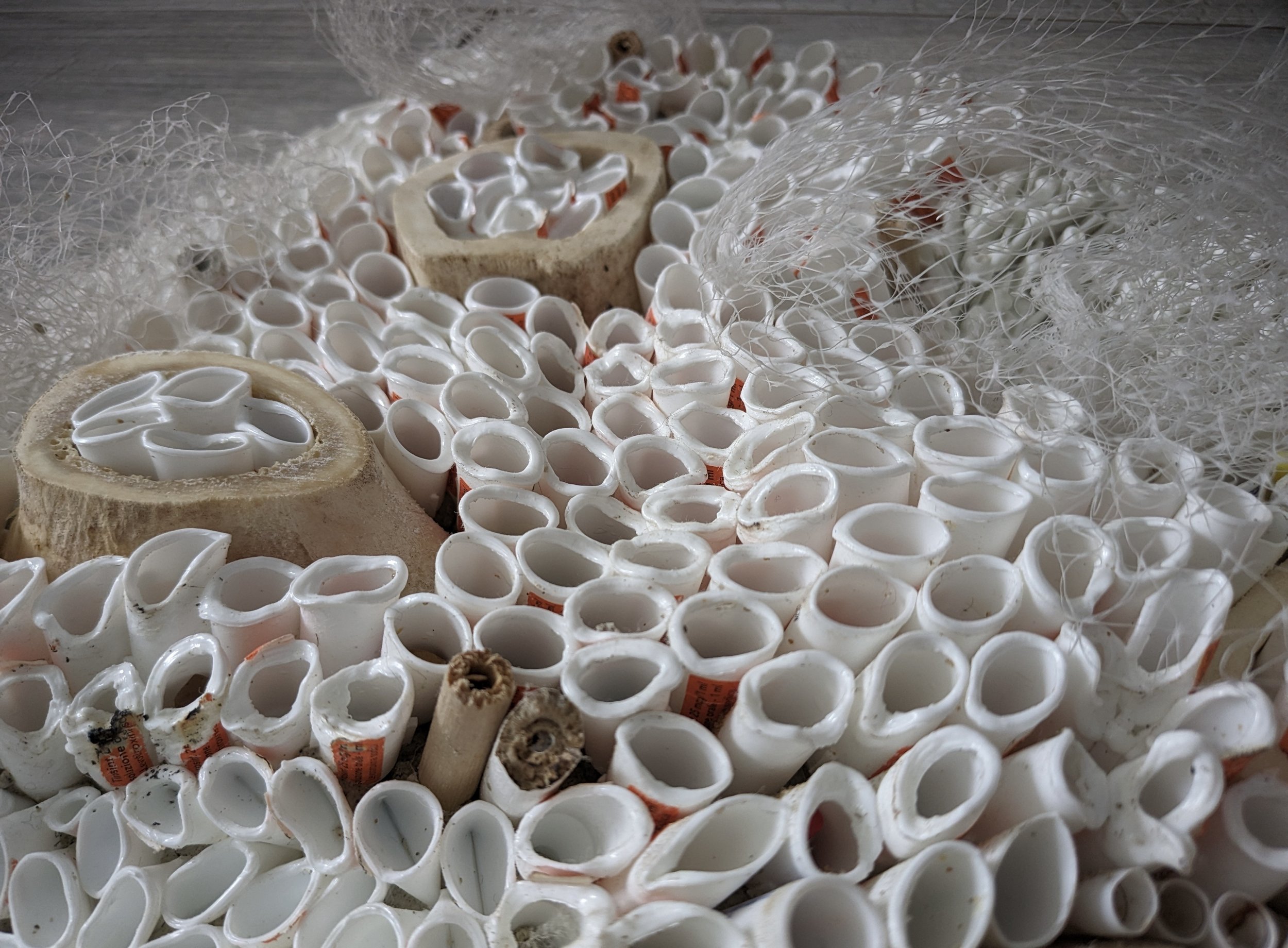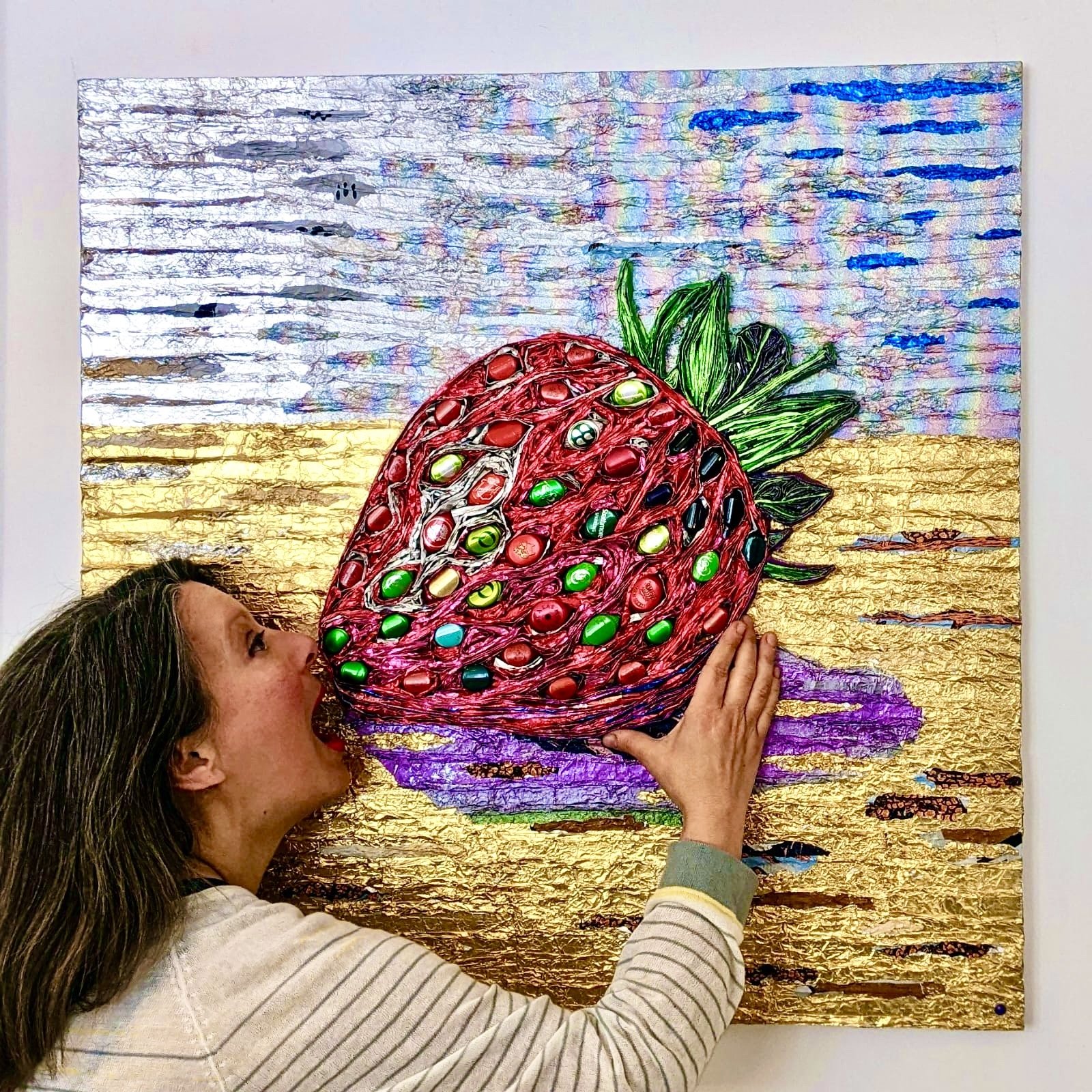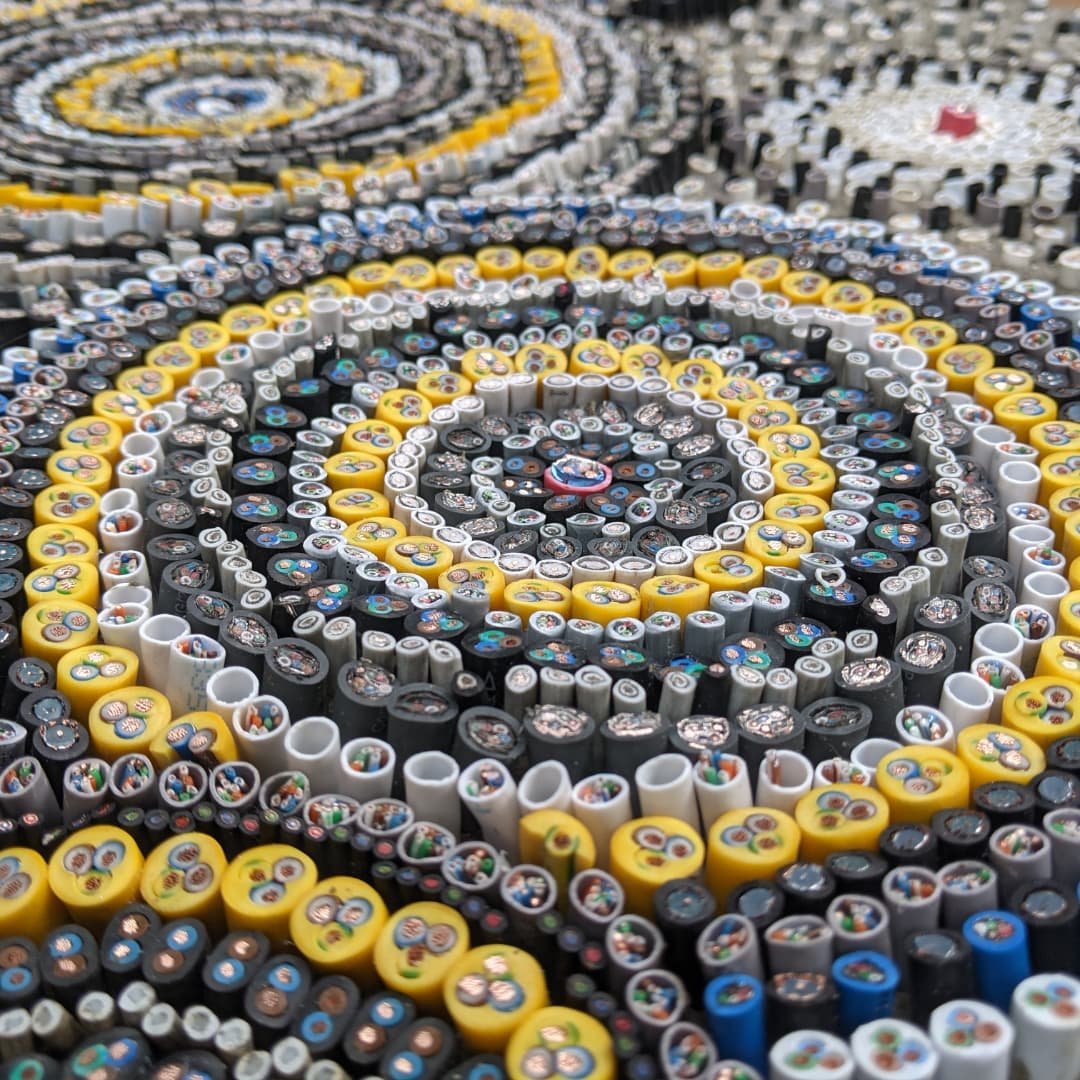Interview
Francesca Busca
As an Eco-artivist, ‘Rubbish artist’ and mosaicist, Francesca pioneers sustainable art by creating her artworks entirely out of waste (her 'trashure'). Torn between optimism and surrender, Francesca is haunted by the idea of mankind’s imminent self-destruction. Yet she believes in a future for humanity of resourceful innovation through re-thinking, re-purposing and reducing. Her artworks are drenched in love and hope: every tessera she creates is in itself a protest against our disposable lifestyle, providing a different perspective on rubbish. In her world rubbish acquires new value and meanings, and becomes the undisputed protagonist of her artworks, as fun and beautiful a Cinderella as she can master it to be.
The more beautiful, the clearer the message: from waste to wonder. Gesamtkunstwerk, her eco-artivism encompasses every aspect of her life: a vegan raising vegans, using 100% renewable energy, wearing second-hand clothes, being plastic free wherever possible, seeking local food and saving water, growing a vegetable and wildlife garden, experimenting with permaculture, fostering a passion for evolutionary ecology and vegetal neurobiology and not flying for the past 4 years, as she strives to live as sustainably as possible. She loves to inspire and be inspired. Francesca graduated with distinction in Mosaic and Fine Arts at the London School of Mosaic in 2019, where she also lectured the Fabrication module in 2021/22. She exhibited in over 100 venues internationally, was published in over 60 articles and textbooks internationally, and won over 2 dozen awards internationally. She is the founder of the Payment in Kind(ness)© initiative, whereby she accepts eco-friendly actions as payment toward her artwork, and of ArtforTrash©, whereby she uses the clients’ own waste to create artwork for residential, institutional and corporate settings internationally. Francesca runs pro bono art projects with schools, individuals and organisations on eco-awareness and sustainability. To name a few, she collaborated with Living Streets, Salon Sustainability, Fernando Montaño and a few primary and secondary schools in London. Her longest collaboration (March 2018 - April 2019) was “A Breath of Fresh Air” with the London International Gallery of Children’s Art (LIGCA), which involved 5 schools in London and Delhi and culminated in an exhibition at the Nehru Centre in Mayfair - along with a few workshops with primary and secondary school students (on links between nature and pollution through Sanskrit philosophy and chanting). She is currently collaborating with the Institute of Marine Sciences in Venice on Project Maelstrom, whereby she will create a permanent installation in loco during the Venice Boat show 2024 (May/June), by using both the waste recovered from the sea through their initiatives and that from their labs.
What is your background and how did you start your journey in the art world?
“I like to call myself an Eco-Artivist, or Rubbish Artist: as such, I create my artworks entirely out of waste. However, my background is in the Classics and the Law: ex-City solicitor, I practiced art as a hobby since I was little, whether selling my drawings on the street as a child, preparing wall drapes for medieval fairs by only using period techniques as a teenager or frantically modelling clay whilst practicing law. I finally made the switch and eventually graduated at the London School of Mosaic in 2019, where I also lectured Fabrication a couple of years later.”
What does your work aim to say? Does it comment on any current social or political issues?
“In times when nature is literally suffocating in plastic and when our resources are used up in around half the sustainable period globally, my belief is that we should, and we can, stop plundering Earth for new resources unnecessarily, and that what we treat as disposable actually has a value and should be given a chance to be useful every time it is so possible, with the aim of not only reducing - but preventing waste altogether. I then realised that this urgency is still surprisingly overlooked by the community, and there naturally ensued the need to spread the knowledge and to find ways to make it possible and adoptable throughout all classes of society – whilst being fun and collaborative. My intention clearly is not to patronise, but rather quite the contrary: I believe in our capacity to change and better ourselves, and I think that often the main cause of our current crisis is indeed our ignorance, induced by a system which often leaves us little space to question the established dogmas of capitalism and the basic idea of productivity, currently so commonly distorted into consumerism. But this is just the medium. The aim is to keep innovating mosaic and pushing its boundaries, breaking the division between fine art and this ancient craft, making both of them accessible and relatable to all spheres of society, and keep inspiring people to do the same. From a museum to an office, from a class to a home, I want to keep transforming the unwanted into desirable, shame into wonder, the superfluous into the essential, and provoke change: create a wider community of like-minded people encompassing all spheres of society, at all levels, across all professions, age and belief; wide enough to be able to shift to an economy based not on the wealth of a few humans, but on the health of the whole eco-system, where the common good has finally ousted profit.”
Do you plan your work in advance, or is it improvisation?
“My practice is a trade d’union between fine art and mosaic: as such, I don’t think it could ever be exclusively one or the other. It is intuitive in its inception, both with regard to design and technique, and in its execution, due to the natural evolution of the piece both physically and in its conceptual elaboration. Yet, just as a mosaic, it has to be planned depending on the material available, as I cannot afford to run out of it mid-way and as the material is waste, the technique is often material-driven. At the same time, it has to be improvised most of the time anyway – either because I use more material than expected, or because of the various changes I make along the way. I love thinking on my feet: it is by far the most enjoyable part of the process. I would rather rework the parts done than abandon the pursuit of a new idea.”
Are there any art world trends you are following?
“I am curious about and enjoy seeing all mediums. I particularly enjoy environmental art, land art and ‘trash art’, and any socially engaged art. I think nowadays contemporary figures like Banksy and Ai Weiwei are essential, and the perfect embodiment of what is truly needed: Art for Change. At a time when we have finally reached the required equality, respect and dignity in our diversities, we are still facing some obvious social injustices which make us realise how delicate the principles of freedom and tolerance are, and that we should never take them for granted. I do think we should finally find equally powerful figures in the name not just of humans, but of the whole. For example, with regard to the preposterous decisions our government has taken in the past few years denying some vital environmental commitments, which in my view should be indicted as global genocide. We really need to speak up for this, just as loud, and ensure our empathy finally matures and grows to include every creature in the planet. If it is indeed true that “Art is Essential”, I think it would also ring true to add “for our survival”, which I believe would be the case if all artists divulged attention to sustainable practices. I think it would be selfish and contradictory for an artist, whose role is to inspire society and often to think ahead of their times, not to embrace – and drive! – environmental responsibility.”
What process, materials and techniques do you use to create your artwork?
“Even in waste there are different degrees of sustainability: if I can, I select material which cannot be recycled or reused. Given only metal is infinitely recyclable, I handle it with utmost respect: imagine the treat for me to use screw caps, which are made of such precious resource but which are not yet recyclable, at least in London. I always tell my clients that, regardless of the value of artwork, they are getting a precious stash of prime resource for the future! Obviously process, material and technique vary greatly depending on whether it is a commission, an exhibition piece, or a pro bono project. For commissions the materials are either those I have enough of or what is provided by the client, for my Art for Trash initiative, whereby I use the client’s waste to make their artwork, and the process and techniques are greatly influenced by the presence of a brief, its purpose, its settings and especially the client’s beliefs and expectations. Most of the time the clients trusts me fully, and I am truly grateful for that. When it comes to an exhibition piece, the world is my oyster: I will either use a new material, or whatever I have enough of and which suits the message I want to get across. Though I love the challenge of making do and thinking on my feet, I also love to be able to create a piece which is free from rules, and where the result could be way off from where it started. There is something almost spiritual about this process of creation, as a creature leading the creator, for which I am truly thankful. This is when I can make mistakes and enjoy them fully, using them as the perfect excuse to learn or try something new. It’s so much fun and rewarding to make pure, simple, messy, wacky, therapeutic art – I would think it is a basic need we all have.”
“ I particularly enjoy environmental art, land art and ‘trash art’, and any socially engaged art.”
What does your art mean to you?
“My art is an expression of my eco-activism: it is a part of me, it is what I do, it is in everything I do, it is absolute Gesamtkunstwerk. I am constantly and unflinchingly engaged both socially and emotionally in everything I do, both in my practice and in my everyday life - whether trying to eat, use and buy only ethical, second hand, plastic free, cruelty free items, clean energy, tending to my veggie and wildflower garden or not flying. Being so whilst trying to inspire and be inspired to do better can be the most energising or the most draining exercise ever: swaying from confident, almost childish positivity to moments of cynical, utter surrender. In a world where around 80% of agricultural land is used for farmed animals and it is scientifically proven that if we all went vegan we would reduce such figure by 75%, but where a few seconds of pleasure for our tastebuds seem to be worth more than the life of other creatures and the future of our children, sometimes it is really hard to believe humanity actually deserves to be saved from its self-extinction. When this thought hits me, it drains my energy to regain enough self-confidence to stop it from daunting me. But were I not hopeful, I would not be doing what I do. It is indeed hope that kindles my whole practice, as I believe that we can change, we can learn to be better, we can understand that we are not the owners of this planet, but rather a link which has gone berserk in the chain of our wondrous eco-system; and that yes, we can indeed grow to understand and embrace the reality that all creatures (both animal and plants) play a vital role in nature and are to be treated as equals – and that we should not make arrogant claims of ownership toward our planet, but rather feel nothing but humble, joyous gratefulness and respect.”
What’s your favourite artwork and why?
“It is so hard to choose! Every piece I make is quite emotionally charged, as it is drenched in love and hope; with a few exceptions which are rather cathartically imbued with surrender instead. However, I think it is a piece called Hope (2019): it was my graduation piece from the London School of Mosaic, and it is a beautiful fusion of decadent smalti with used corks and fruit nets, reworked in tesserae. It shows a plant growing out of a wall, with real layers of leaves in browning colours, yet with a little green leaf in the middle representing rebirth: Nature suffering, choked by human expansion - yet, if we give it a chance, its resilience might just be the key to salvation. The leaf can actually be lifted, as a symbolic bridge both between precious smalti and disposable waste, and between the untouchable role of fine art and the practical craft of mosaic.”
Have you had any noteworthy exhibitions you'd like to share?
“In 2018, I launched the Payment in Kind(ness) initiative at my solo exhibition in the lobby of a private estate on High Street Kensington. The spirit of this exhibition was to foster the public’s attention to little things, be that little objects in my artworks which would otherwise be considered discards, or little things which could help the environment: as an incentive to re-thinking, I started accepting Little Things as a “Payment in Kind(ness)” towards any of 10 of my artworks on sale. The aim was to invite people to actively seek and do little acts of kindness toward the environment, in the hope that, just like with me, one act would lead to the next, and the next, in a healthy spiral of eco-activism by re-thinking our daily routines. A funny anecdote is that after setting it all up I went home to get changed, and when I came back for the PV a couple of hours later I found that all the objects I had left under each artwork, to show the original items I had used and transformed to make them, were gone. The cleaner had passed by and swept them all up, thinking they were rubbish. It was quite upsetting at the moment, but now of course thinking of it brings a smile to my face, and confirms that it did indeed prove my point. Interestingly enough, the exhibition was censored after a few days, as found too controversial by the estate residents. I had no objections of course. Had it been an art gallery, it would have been a completely different story.”


